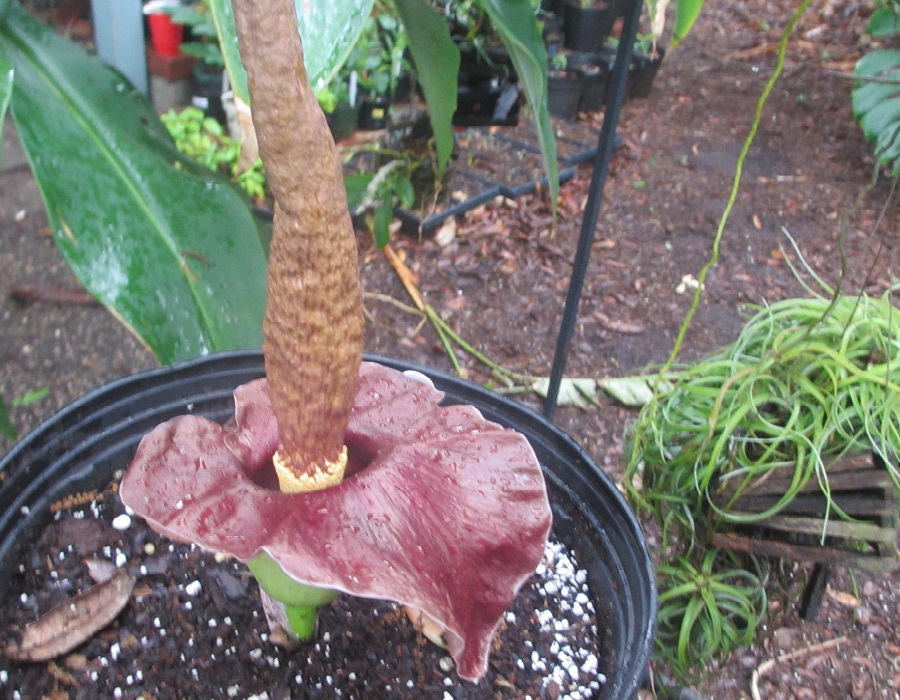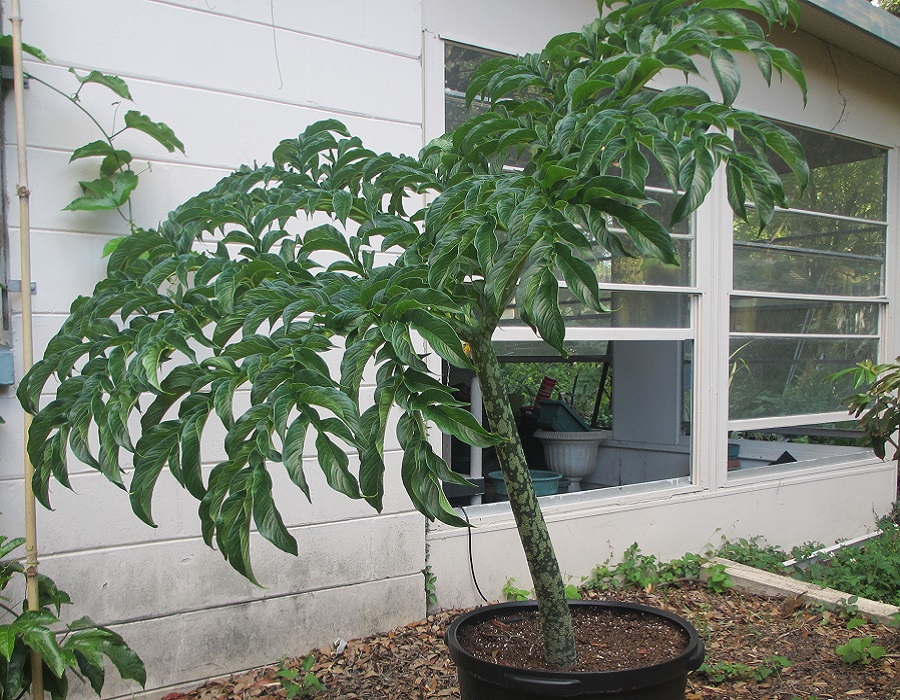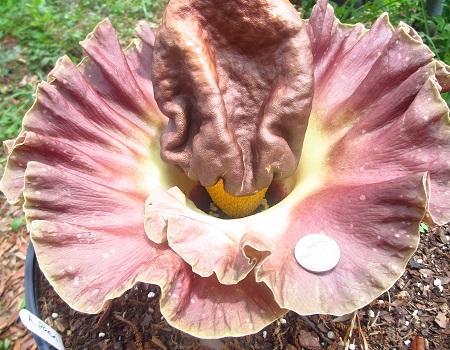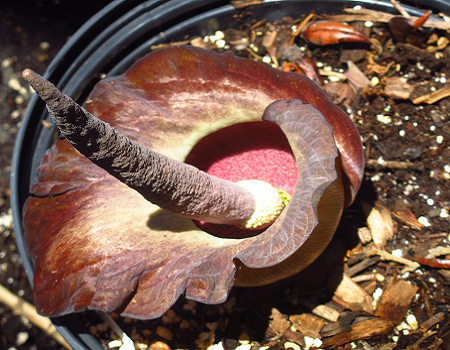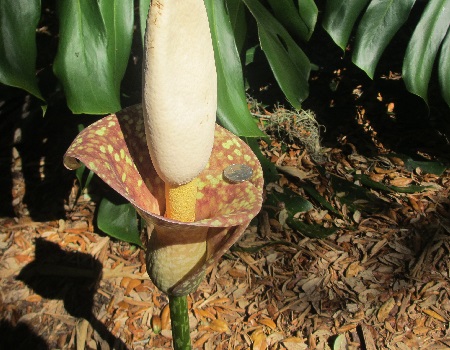Amorphophallus
The genus Amorphophallus, often referred to as the “voodoo lilies”, consists of approximately 200 species distributed throughout the paleotropics. There are no species native to the new wold tropics. Most Amorphophallus species are found in lowland forests of Africa, Southeast Asia, and the Pacific Islands. Mostly known for their enormous showy flowers that reek of carrion, they also have very unusual foliage.
Plants For Sale
Fear Not!
Many people are uneasy about the fact that Amorphophallus plants have flowers that smell like death, but aside from the smell, they are beautiful, exotic, odd, and truly fascinating. Don’t let the smell of the flowers scare you off. These plants are very amazing additions to an exotic tropical collection, and I highly recommend them. Not to mention that the flowers last longer than the smell does, so even if you find the smell intolerable, you can still appreciate their beauty after they lose their fragrance. They really only smell for one or maybe two days, and sometimes for as little as only a few hours on the first day that they open. So, don’t be a hot house orchid, just pinch your nose when they bloom, and after all, they don’t bloom very often. Appreciate them for exactly how rare and awesome they are.
Hot!
Amorphophallus flowers actually give off heat during the period of time that the female flowers are receptive to pollen. This also coresponds with the time that the inflorescence is emitting the fetid odor of death. This is to mimic the heat given off during decomposition of a dead corpse… Neat!
Growth habit
The foliage of these plants superficially resemble palm trees, but the “trunk” is actually the petiole of a single leaf, with the leaf blade radiating outwardly from it, frequently dividing into many leaflets. All of the members of this genus grow from underground tubers, and go through a period of dormancy. When the plant breaks dormancy, a single leaf emerges from the ground and that leaf lasts all season long. Roots emerge from the top of the tuber, and grow radially outward.
These roots act as suspension cables to keep the petiole and leaf blade upright. Each season, the tuber gets completely used up to grow the leaf. It ends up as a shriveled husk under the roots of the plant. At the end of the season, a new tuber is produced before going back into dormancy. The husk of the previous year’s tuber can be found, stuck to the bottom of the new tuber.
Blooming and Pollination
When a plant reaches maturity they will begin to bloom periodically. Most species don’t bloom every year, but instead, bloom only once every several years. Usually the inflorescence emerges before the leaf grows, but some species grow the inflorescence at the same time as the leaf. Some species don’t grow a leaf in the same year that they bloom, but go directly into dormancy after the blooming period is over. The flowers are typical of aroids with a few interesting adaptations. Like all aroids the pistilate (female) flowers mature and open first. The pistilate flowers must be pollinated on the same day that the spathe first opens. The spathes of many Amorphophallus species have ridges and sometimes hairs, that allow insects to enter a cavity at the base of the infloescence formed by the spathe, but prevent those insects from leaving that cavity. If those insects are carrying pollen from another flower, they will pollinate the female flowers. The next day, the staminate (male) flowers open and cover the trapped insects with pollen, then the spathe opens further, releasing the trapped insects to fly off and pollinate another flower. In this way, Amorphophallus plants ensure that they are not self pollinated.
Species
Amorphophallus impressus
Click here for more information
Amorphophallus konjac
Click here for more information

